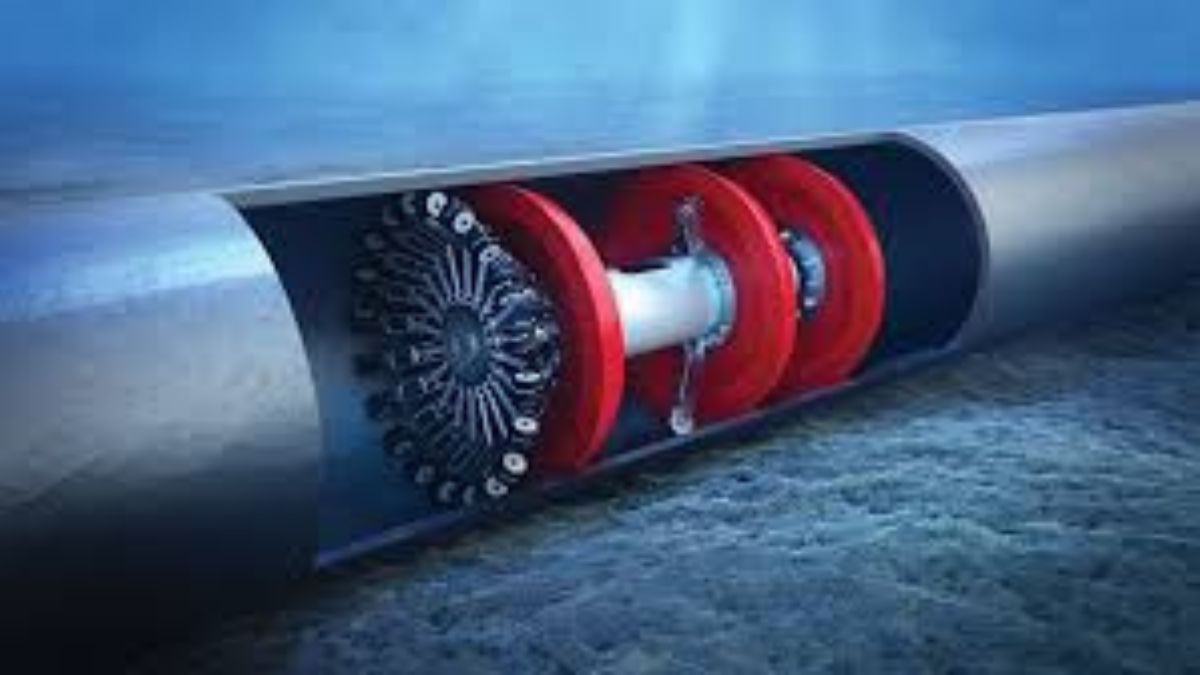TECHONOLOGY
Current Trends in Oil and Gas Accounting

Oil and gas accounting is undergoing a profound transformation, shaped by a convergence of advanced technologies, stringent regulations, and evolving stakeholder expectations. In an era where precision and accountability are paramount, industry professionals are focusing on innovative strategies to ensure accuracy, efficiency, and transparency in their processes. One way experts distinguish themselves in this fast-changing landscape is by obtaining APA Certification, a credential that demonstrates a mastery of specialized accounting practices relevant to this sector. The importance of ongoing professional education and up-to-date credentials cannot be overstated as the industry continues to adapt to digitalization and stricter compliance mandates. Achieving APA Certification equips accountants with an in-depth understanding of best practices, regulatory frameworks, and the latest technological tools—preparing them to meet today’s challenges and seize new opportunities.
Technological Advancements in Accounting
In recent years, technological innovation has significantly reshaped accounting practices across the oil and gas sector. Artificial Intelligence (AI) and Machine Learning (ML) are enhancing the accuracy and speed of data analysis, automating repetitive tasks, and enabling real-time financial insights. For example, AI-powered platforms can analyze complex operational data sets from drilling operations, supply chains, and commodity markets to identify financial patterns and anomalies more efficiently than ever before. This supports quicker, more informed decision-making for companies navigating market volatility and operational risks. Blockchain has also emerged as a transformative technology, offering greater security and transparency in financial transactions. The decentralized nature of blockchain ensures that once financial data is recorded, it cannot be tampered with—making it particularly suited to the intricacies of joint ventures, royalty payments, and the extensive supply chains characteristic of oil and gas companies. Despite the promise of blockchain in bolstering audit trails and protecting against fraud, wide-scale implementation continues to face barriers, including integration complexities and evolving industry standards.
Regulatory Compliance and Transparency
Compliance with regulatory standards is a top priority for oil and gas companies as governments and regulators enact increasingly detailed financial disclosure requirements. The U.S. Securities and Exchange Commission (SEC), for instance, has intensified its focus on transparency regarding environmental costs, asset retirement obligations, and other material financial risks. Responding to these demands, companies are enhancing their internal controls, documentation processes, and reporting accuracy to minimize compliance risks and reinforce investor trust.
International investor groups, collectively managing trillions of dollars in assets, have called on U.S. authorities to mandate greater disclosure of environmental and decommissioning liabilities. This heightened scrutiny amplifies the urgency for oil and gas companies to develop transparent and comprehensive disclosure practices, not only to comply with evolving rules but also to meet the expectations of increasingly discerning institutional investors.
ESG Integration in Financial Reporting
The surge in demand for Environmental, Social, and Governance (ESG) transparency is driving major changes in oil and gas accounting. Stakeholders, from regulators to shareholders and the public, want greater insight into how companies are responding to climate change, governing their operations, and contributing to social well-being. As a result, ESG factors are now deeply embedded in financial reporting standards and external audits. Most oil and gas firms have taken notable steps to improve ESG reporting. According to recent industry data, 80% of these companies voluntarily report greenhouse gas emissions—classified as Scope 1 and Scope 2 2-while 42% seek third-party assurance to validate their disclosures. With independent verification on the rise, the reliability and comparability of ESG information is set to improve, fostering trust and supporting sustainable investment decisions.
Impact of Mergers and Acquisitions
Market consolidation through mergers and acquisitions (M&A) remains a prominent feature in the industry, providing companies opportunities for growth, synergies, and portfolio optimization. However, these deals introduce significant accounting challenges, such as properly valuing assets and liabilities, harmonizing disparate accounting policies, and integrating various financial systems. Complex M&A transactions—such as ExxonMobil’s acquisition of Pioneer Natural Resources and Chevron’s purchase of Hess—demonstrate the necessity for meticulous planning and expert oversight to ensure smooth transitions and accurate financial consolidation. Navigating the accounting implications of M&A activities, including purchase price allocation, goodwill assessment, and fair value measurements, requires both technical proficiency and strategic vision. Companies that deploy well-coordinated teams and advanced financial technologies are far better positioned to achieve operational efficiency and regulatory compliance post-acquisition.
Adoption of Cloud-Based Solutions
With the rise of digital transformation, the adoption of cloud-based accounting systems has accelerated across the oil and gas sector. These solutions offer considerable advantages, including scalability, real-time data access, simplified collaboration, and reduced IT infrastructure costs. For companies with geographically dispersed operations, cloud platforms enable seamless integration of accounting data, standardizing reporting across international subsidiaries and joint ventures. Modern cloud solutions also enhance disaster recovery, automate complex accounting workflows, and scale resources on demand. As oil and gas businesses seek to stay competitive, investing in secure, flexible, and future-ready accounting technology is becoming a cornerstone of strategic planning and operational excellence.
Conclusion
The evolution of oil and gas accounting reflects broader shifts in technology, governance, and business strategy. To stay ahead, professionals pursue advanced credentials, embrace digital tools, adhere to ever-tightening regulations, and embed ESG principles into their core financial practices. By maintaining a proactive approach to these trends, organizations can ensure not only compliance, but also sustained growth in a rapidly changing global industry.
TECHONOLOGY
Reducing Jobsite Risks: Essential Equipment Practices for Safer Construction Projects

Current Challenges of Equipment Safety
Jobsite safety is one of the toughest challenges facing the construction industry today. Workers are surrounded by massive machinery, moving vehicles, and constantly shifting environments daily. A slip, a moment of inattention, or an overlooked hazard can turn an ordinary work change into an emergency. Equipment-related accidents account for a large portion of the serious injuries and fatalities in construction each year. These incidents don’t just impact those directly involved—they slow down or halt project timelines and disrupt entire teams.
Risks are present on every jobsite, whether it’s a multi-story urban build or a small remodeling project. Often, it’s not a single catastrophic failure but an accumulation of oversights—like blocked walkways, unmarked drop zones, or poorly organized tools—that lead to problems. Simple tools and products, such as a construction debris tarp, can keep work areas orderly and safe by minimizing clutter around heavy machinery. Attention to both daily routines and physical site conditions goes a long way. With so much at stake, a renewed focus on practical, site-level changes is essential for safeguarding workers and maintaining project momentum.
Core Practices for Reducing Risks
Establishing clear safety routines on job sites is crucial for risk reduction. Pre-shift equipment inspections, daily walk-around inspections, and proper PPE are essential. Reporting defects, unsafe practices, and near-misses is encouraged. Limiting phone and electronic device use in heavy equipment zones and removing debris from active pathways can help prevent accidents. Encouraging clear signage, daily huddles, and open conversations about hazards helps maintain vigilance and engagement.
How Technology Improves Jobsite Safety
The advances in technology have transformed how modern construction sites handle equipment safety. Today, machines are often equipped with digital controls, sensors, and backup cameras that boost operator awareness. For example, telematics systems can track usage patterns, monitor live operating conditions, and flag unsafe practices before they result in damage or injury. Wearable technology, such as smart helmets or wireless location badges, sends immediate alerts if workers enter unsafe areas or machinery gets too close for comfort.
Newer systems even use predictive analytics by drawing on vast data sets, giving managers the ability to anticipate and prevent accidents before they occur. Integrating artificial intelligence and the Internet of Things (IoT) allows sites to detect trends, such as repeated near-misses at specific locations or times. This data-driven approach empowers safety managers to proactively change workflows, leading to measurable reductions in accidents and disruptions.
The Importance of Regular Equipment Maintenance
Regular maintenance isn’t just about following equipment manuals or regulatory requirements—it’s a major factor in ensuring that machinery operates safely throughout its life cycle. When mechanical breakdowns occur, they can cause sudden hazards: failed brakes, jammed controls, or flying debris. Establishing both scheduled and condition-based maintenance routines means catching wear and tear before it risks worker injury.
By maintaining digital maintenance logs for every asset on-site, crews and supervisors can track service histories and ensure no checks are missed. Preventive maintenance, like lubricating moving parts, checking for leaks, and replacing worn components, can dramatically reduce the chance of equipment failure. Research consistently finds that sites with diligent maintenance report fewer and less severe equipment-related incidents, reducing both downtime and health risks to operators and others nearby.
Training Initiatives That Make a Difference
Regular skills refreshers are crucial for equipment operators, as job-site risks change with each project. Courses combining hands-on demonstrations, scenario-based problem-solving, and digital learning modules provide a comprehensive safety foundation. Pairing novice workers with seasoned mentors fosters a culture of collective responsibility. Strengthening training includes hosting on-site demonstrations, conducting scenario trainings, utilizing interactive e-learning programs, and establishing two-way feedback channels. Effective training empowers workers to recognize hazards, correct unsafe behaviors, and make safety-driven decisions independently, preventing accidents and encouraging adaptation.
Navigating OSHA and Industry Regulations
Compliance with safety standards, particularly those laid out by OSHA and state agencies, is a baseline requirement for any responsible contractor. Regulations are developed based on extensive research and analysis of industry risks, making them an essential resource for reducing accidents. Understanding these protocols—whether related to machine guarding, lockout/tagout procedures, or safe lifting practices—keeps sites legal and workers protected.
It’s also valuable to designate a dedicated safety officer or choose rotating “safety leads” among crew members to monitor compliance onsite. This approach elevates accountability, ensuring that equipment, procedures, and records are all up to date. Staying current with industry bulletins and regulatory updates also demonstrates a commitment to proactive, rather than reactive, safety management.
Fostering a Safety-First Culture
Beyond tools and policies, job site safety is a matter of culture. When leadership values safety and recognizes safe behavior rather than only punishing mistakes, it motivates everyone to take ownership of risk reduction. Daily check-ins, regular “toolbox talks,” and celebrating safety milestones build morale and help integrate safety into the fabric of crew routines.
Reporting hazards and near-misses without fear of retaliation is vital to catching problems early. Even small measures, like keeping walkways clear and protecting materials using a construction debris tarp, show the importance of every precaution. These incremental improvements foster attention to detail, which ultimately translates to significant reductions in injury rates and project delays.
TECHONOLOGY
Understanding Pigging: The Backbone of Pipeline Cleaning

Why Pigging Is Essential for Pipeline Maintenance
Pigging is a pillar of pipeline upkeep for industries that rely on uninterrupted flow—such as oil, gas, water, and chemicals. Originally, the process involved simple mechanical devices pushed through pipelines to dislodge buildup. Now, pigging has evolved to become a sophisticated maintenance procedure that ensures optimized throughput and system reliability. The transition from manual cleaning to automated systems is not just about boosting efficiency; it’s about protecting infrastructure investment and minimizing the need for unplanned stoppages. By embracing high-performance solutions such as intelligent pipeline pigs, operators can proactively maintain network health without sacrificing operational continuity.
In an industry where downtime can lead to cascading logistical and financial challenges, pigging strategies support continuous delivery. Experts highlight the importance of robust infrastructure for economic and community stability. Recently, as outlined by BBC News’ business review, securing critical networks through preventative measures has become a top priority worldwide. Pigging addresses existing debris and scaling and plays an essential role in long-term system resilience.
Key Challenges in Keeping Pipelines Clean
Pipelines, particularly aging ones, face constant threats from internal corrosion, sediment, wax buildup, and biofouling. Over time, these contaminants restrict flow, create hazardous pressure fluctuations, and can trigger leaks or catastrophic failures. The complexity is heightened in pipelines that snake through tough terrain or have not seen regular maintenance updates. Historically, the only solution to persistent fouling or blockages was to take an entire pipeline section offline—a disruption that comes at a high cost. To avoid these pitfalls, modern industry leaders are moving toward approaches that clean, inspect, and diagnose issues in a single pass.
As climate volatility intensifies and regulatory bodies scrutinize pipeline operations more closely, the demand for comprehensive maintenance solutions rises. Data from the U.S. Department of Energy’s infrastructure news suggests that integrated, data-driven pigging solutions can address these challenges by catching emerging problems before they escalate. In doing so, pigging serves as both a shield against preventable failures and a tool for compliance with evolving industry standards.
The Technology Behind Modern Pigging
The new generation of pigging tools combines mechanics, electronics, and advanced software into compact, powerful packages. Intelligent pigs, sometimes called “smart pigs,” travel the pipeline’s interior, delivering real-time data about wall thickness, temperature, and pressure. Some units feature brushes, blades, or magnets for cleaning, while others are equipped with ultrasonic sensors or magnetic flux leakage systems for inspection. Not only do these technologies remediate physical blockages, but they also map the pipeline’s health and spot signs of wear or defect.
Robotics have expanded pigging’s reach, allowing deep access into previously inaccessible or hazardous sections of pipelines. These robots can identify even minute signs of corrosion, cracks, or pitting—issues that, if left unchecked, could threaten entire networks. By combining cleaning with non-destructive testing, intelligent pigs provide a more holistic view of pipeline integrity, reducing the frequency of invasive manual inspections and the associated risks.
Functionality and Workflow of Pigging Tools
Pigging begins with launching the device (“pig”) through a designated entry point. The pig is propelled by the pipeline’s product flow, compressed air, or water. As it travels, it scrapes away residue and sediment, restoring the pipeline’s original carrying capacity. Sensors gather data, and upon retrieval, the pig delivers a wealth of actionable insights, pinpointing locations that need repair or further cleaning.
This continuous operation model sets pigging apart from older, more disruptive practices. Operators benefit from a cyclical workflow: launch, clean, inspect, analyze, and repeat as needed. Such processes optimize reliability and extend the functional lifespan of pipelines. Pigging tools uphold safety and productivity targets by reducing degradation and minimizing downtime.
Preventative Maintenance Strategies
Smart pigging fits neatly into broader preventative maintenance regimes. Regular scheduling of pigging cycles, guided by predictive analytics and detailed flow monitoring, keeps network health high and intervention needs low. Companies that invest in these strategies often report dramatic reductions in emergency repair events and overall lifecycle costs. Operators also benefit from operator training programs adapted to the nuances of modern equipment, ensuring peak performance.
Rather than reacting to crises, utility managers can anticipate maintenance needs based on trend analysis and historical data, ensuring their infrastructure is always one step ahead of the next challenge. Coordinated, cross-industry knowledge sharing further improves response capabilities, making smarter pigging a staple of best-practice pipeline management.
Safety and Environmental Considerations
Well-maintained pipelines protect investments, safeguard public health, and protect the environment. Reducing leaks and spills directly lessens the risk of polluting waterways, farmland, and sensitive habitats. Many modern pigging systems are designed to avoid harsh chemicals, aligning with regulatory trends toward sustainability.
Additionally, minimizing human entry into pipelines reduces exposure to hazardous environments, lowering workplace injury risk. Environmental monitoring has become essential to the pigging process, ensuring that cleaning practices do not introduce new pollutants. As environmental compliance standards stiffen, the role of pigging in supporting community and ecosystem wellbeing will only increase.
Current Trends and Future Directions
The pipeline industry is rapidly embracing digital transformation. Artificial intelligence and machine learning are beginning to analyze the data captured by intelligent pigs, optimizing maintenance schedules and detecting micro-level defects invisible to traditional tools. Integrating biodegradable components and wireless sensor networks is also on the rise, reflecting a growing commitment to green practices.
According to sector analysts and reports like those from the U.S. Department of Energy, ongoing R&D will soon enable autonomous pigging tools to self-diagnose, clean, and even initiate repairs with minimal human oversight. As these innovations gain ground, the future of pipeline maintenance will be defined by safer, smarter, and more sustainable cleaning powered by the humble—yet essential—pipeline pig.
Home
How to Maintain Your Brand Identity with White-Label Web Services

Key Takeaways:
Maintaining a distinct brand identity is vital for any business navigating today’s online landscape. White-label web services present an effective way to expand your offerings while safeguarding your brand’s uniqueness. This article outlines practical steps to utilize these services without losing sight of your brand personality, voice, and reputation.
Introduction
In a digital world overflowing with competition, standing out with a strong and memorable brand identity is more important than ever. Businesses constantly seek ways to expand their digital capabilities, but building new in-house products and services is not always practical. This is where white-label web services offer a strategic advantage. They empower organizations to deliver comprehensive solutions under their brand, ensuring that customers associate these solutions with their name alone. However, to preserve and reinforce brand identity, it’s essential to integrate these services thoughtfully and deliberately.
Using White-Label Website Development to Support Your Brand
White-label website development enables you to adopt expertly built digital platforms as your own, presenting them with your branding and messaging. This allows businesses to accelerate time to market and expand their digital portfolios without investing heavily in web development resources. To maintain brand identity, it is critical to begin by defining clear brand guidelines for the look and feel of your website. These guidelines should outline color schemes, typography, logo use, and tone of voice. By providing these specifications when utilizing white-label website development solutions, you ensure that every element—from button shapes to navigation menus—reflects your brand standards. Additionally, requesting custom features and functionalities that differentiate your site from generic templates helps reinforce brand recognition and fosters greater trust with your audience.
Customizing with White-Label Web Design
The potential of white-label web design goes beyond just templates. Customization enables every page and interactive element to embody your brand’s character. To achieve this, leverage the flexibility of white-label web design by meticulously integrating your brand’s style into all visual and interactive components. Establishing guidelines for iconography, imagery, and microinteractions ensures the entire user experience is on-brand and memorable. Don’t overlook subtle details: alignment, spacing, and even the movement of visual elements contribute to how users perceive your business. Work closely with your design team or service provider to tailor pre-built layouts and features, ensuring that every aspect coincides with the brand personality your customers expect.
Aligning Content and Visual Assets
A unified message across your website begins with integrating consistent content, imagery, and multimedia features. White-label solutions offer a strong technical foundation, but your unique content breathes life into these platforms. Craft headlines, body copy, and calls to action that carry your distinct tone and narrative. Incorporate original photography, graphics, and videos to replace or supplement stock assets, reflecting authenticity and trustworthiness. Remember that every blog post, product description, and banner image presents an opportunity to reinforce your brand’s core values and identity. Choose language and visuals that resonate with your target market while differentiating your brand from others.
Ensuring Consistency Across Channels
Brand consistency doesn’t stop at the website. It must extend across every digital channel you use, from email campaigns to social media platforms. Coordinate your messaging, color palettes, and promotional content to create a seamless customer experience, no matter where your audience encounters your brand. Many white-label platforms allow for easy integration with third-party tools—take advantage of these features to synchronize content and branding across channels. Encourage your team to follow the same brand guidelines on and off the website, making your identity recognizable and dependable in all customer interactions.
Monitoring and Evolving Your Brand
Sustaining a strong brand identity is an ongoing process. Regularly review your website and other online assets to ensure they stay true to your brand guidelines and values. Analyze user feedback and engagement data to spot inconsistencies or areas for refinement. Use these insights to update your website content, design, and features as your brand grows or your audience’s expectations evolve. This approach ensures that your brand identity remains relevant and resonant, even as technology and market trends shift over time.
Conclusion
With the right approach, white-label web services enable you to broaden your offerings and strengthen your digital presence without compromising your brand identity. By investing time in guideline creation, design customization, content alignment, and cross-channel consistency, you can effectively present your brand’s personality and values to every visitor. Continuous monitoring and refinement keep your identity vibrant and ensure that what makes your business unique remains unmistakable, positioning you for ongoing success in the digital world.
-

 GENERAL12 months ago
GENERAL12 months agoFrom Fan Art to Original Works: The Diversity of doujindesu Creations
-

 Entertainment8 months ago
Entertainment8 months agoEnchantment & Excitement: Crafting Unforgettable Event Experiences
-

 GENERAL9 months ago
GENERAL9 months agoEngland Business Visa Requirements for American and International Citizens in 2025: A Guide for Entrepreneurs
-

 GENERAL8 months ago
GENERAL8 months agoCrossword Conundrum: The Significance of vault opener nyt crossword
-

 GENERAL11 months ago
GENERAL11 months agoLatest Trends in Men’s and Women’s Jackets for the Upcoming Season
-

 GENERAL8 months ago
GENERAL8 months agoExploring the World of nhentai.nef: A Comprehensive Guide for New Users
-

 Health12 months ago
Health12 months agoDiscovering gel ooru: The Ultimate Guide to This Unique Traditional Craft
-

 GENERAL1 year ago
GENERAL1 year agoWhy raterpoint is Revolutionizing Customer Feedback
